
As a professional social organization and a research unit in the field of real estate, the Vietnam Institute for Research and Evaluation of Real Estate Market (VARS IRE) affirms that the land price list is an important tool of the state in land management, budget collection, calculation of financial obligations, and is the legal basis for determining compensation prices, resettlement support,...
Therefore, the construction of land price lists needs to be done carefully, scientifically and with a reasonable roadmap, in order to accurately reflect the actual value of the market, while avoiding causing disruption and creating financial pressure for people and businesses.
According to VARS IRE, the issuance of the new land price list from January 1, 2026 is an inevitable step in state management, contributing to market transparency and narrowing the gap between state land prices and market prices. However, there are still many opinions that the "shocking" increase in many areas is creating notable risks for businesses, people and bank credit activities.
VARS IRE's analysis shows that one of these impacts affects individuals and households. Accordingly, the group of people who are carrying out land procedures such as changing land use purposes, granting land use right certificates or receiving compensation and site clearance will be most affected, because financial obligations are calculated directly according to the new price list. At the same time, the cost of changing land use purposes, granting red books and buying real houses may increase sharply, affecting the group of people with middle and low incomes. There is even a risk of complaints and disputes arising in areas undergoing compensation and site clearance if the land price adjustment far exceeds the approved price.
In addition, real estate businesses are also affected. Because the increase in land prices causes compensation costs, land use fees - the costs that account for the highest proportion in the structure of project development costs and total project investment to increase sharply. For projects that are being implemented, businesses will fall into a difficult and confusing situation when having to consider whether to continue or suspend implementation, because the sharp increase in land use fees can cause the total investment to exceed financial capacity.
On the contrary, for projects that have not been implemented, businesses can be more proactive in planning budgets and compensation and site clearance plans. However, whether the market will accept the forced increase in selling prices remains an unknown. Even more serious, some projects may incur losses or delay issuing certificates to customers, leading to the risk of disputes - VARS IRE.
In addition, according to VARS IRE, the 2026 land price list with the proposed increase will also impact banking activities and home credit. For example, the valuation of secured assets must be adjusted to the value framework, and banks can tighten lending rates to control bad debt risks. Rising house prices and home ownership costs can reduce purchasing power, especially for first-time home buyers. If the land price list increases faster than the real value, the risk of misalignment between valuation and the market will affect credit quality.
Another impact mentioned by VARS IRE is the market. On the supply side, due to the sharp increase in land use costs, land rents, compensation and site clearance costs, prices will increase and projects will be inflated. The supply structure continues to be unbalanced, mainly concentrated in the high-end and high-value segments because businesses with strong financial potential can shorten development time and launch products to the market faster. Meanwhile, small and medium-sized enterprises face difficulties in implementing new projects, causing the supply of commercial housing, especially in the suburbs of large urban areas, to be at risk of stagnating.
On the demand side, selling prices are expected to increase in line with input costs, causing real purchasing power to decrease, especially among customers with real housing needs. Therefore, there will be a cautious mentality and waiting for support policies that may cause the market to temporarily stagnate.
Notably, selling prices are sure to fluctuate upwards. VARS IRE predicts that investors are likely to adjust selling prices at higher levels, while developing high-end products to maintain profit margins in the context of scarce land funds. At the same time, the general price level in the market will continue to increase, putting pressure on people's access to housing.
In cases where the investor can save costs by being more proactive in budget planning and shortening the time for compensation and site clearance, if the cost savings from administrative procedures, time and legal risks can partly offset the increase in financial obligations related to land, the overall impact will not be too negative.
For local authorities, the adjustment of land price tables will help increase local budget revenue through taxes, fees and land use fees. This additional revenue can be reinvested in infrastructure projects, urban beautification, and regional transport expansion, contributing to increasing land value and promoting local socio -economic development.
However, the volume of records requiring land price updates will increase sharply, easily causing administrative congestion, especially in the context of the 2-level local transfer model not operating smoothly and lacking human resources. Another factor that is warned is the decrease in attractiveness due to increased investment costs, especially in potential areas but not yet invested in infrastructure.
From these analyses, VARS IRE recommends that all price regulations, including land price lists, are only relative. Because in the long term, real estate prices are determined by supply and demand. In reality, it is difficult to expect a land price list to satisfy all groups of subjects, when the purposes of use, benefits and expectations of each group are different.
Therefore, according to VARS IRE, the land price list is only meaningful when applied for a specific purpose, such as compensation and site clearance. If used for other purposes such as calculating land use fees, auctions or taxes, the price list will lose its practicality and needs to be flexibly adjusted to ensure the harmony of interests between the State, people and businesses.
Therefore, VARS IRE suggests that it is necessary to correctly define the role of the land price list. The price list is a tool for State management and tax collection, not a tool to regulate market supply and demand. Stabilizing land price policy should aim at the long-term goal of transparency, fairness and sustainability.
At the same time, it is necessary to clearly define responsibilities between the Central and local levels. The State should only issue a unified technical framework and pricing method, while the locality is the place to operate and adjust in practice. At the same time, increase flexibility in land price management by allowing localities to issue flexible adjustment coefficients according to each area, time, type of land use and socio-economic development goals; apply different levels of land use fees, land rents, taxes, fees, and charges depending on the purpose of use (residential land, commercial and service land, production land, agricultural land, etc.) and in accordance with the level of infrastructure and urban development of each region.
In particular, experts suggest that it is necessary to ensure stability and a reasonable roadmap. Accordingly, it is necessary to build a suitable adjustment roadmap to avoid causing "shock" to the market and sudden impacts on businesses and people, especially in the context that many localities are still perfecting the two-level urban government model.
In addition, communication and implementation guidance need to be strengthened. Dissemination and explanation of policies will help people, businesses and brokers understand the nature and role of land price lists, avoiding exploitation to "inflate prices" or create false expectations about market trends.
Source: https://baotintuc.vn/bat-dong-san/gia-dat-tang-manh-tu-2026-co-hoi-va-thach-thuc-cho-thi-truong-bat-dong-san-20251109172330997.htm

















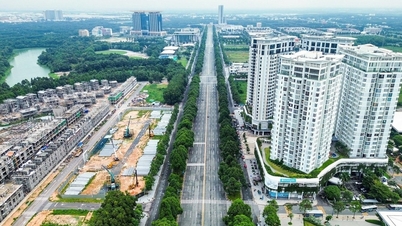




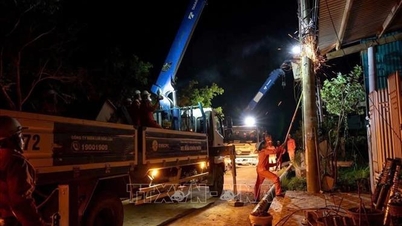









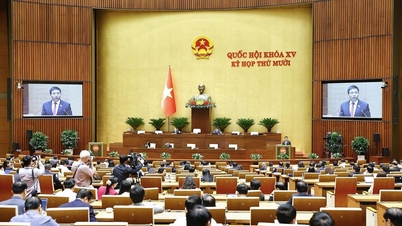



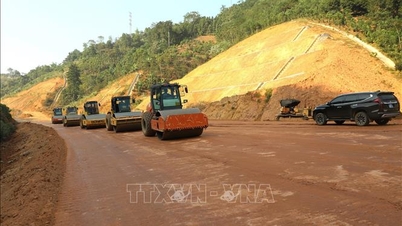












































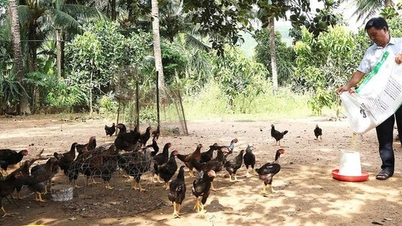






























Comment (0)